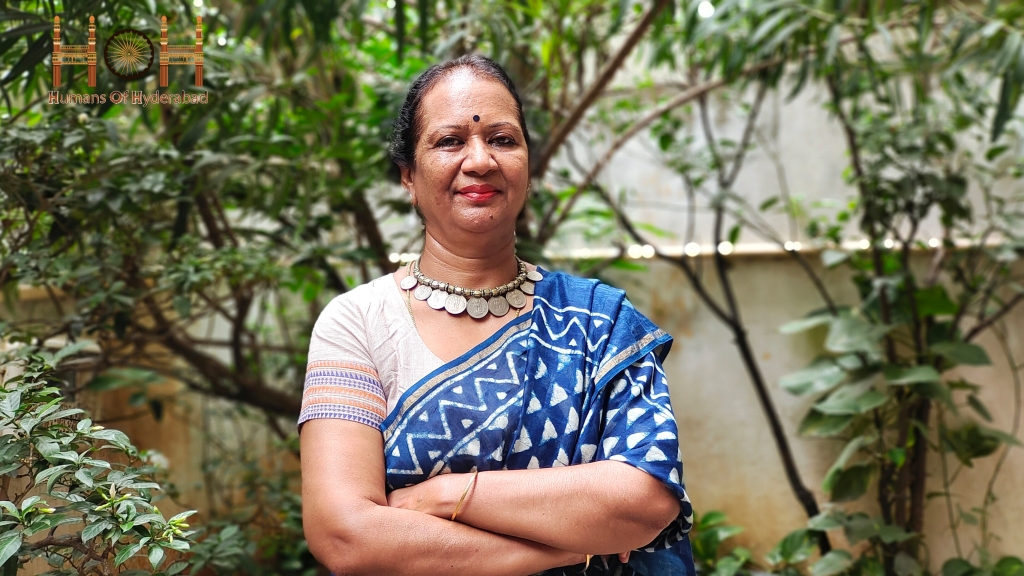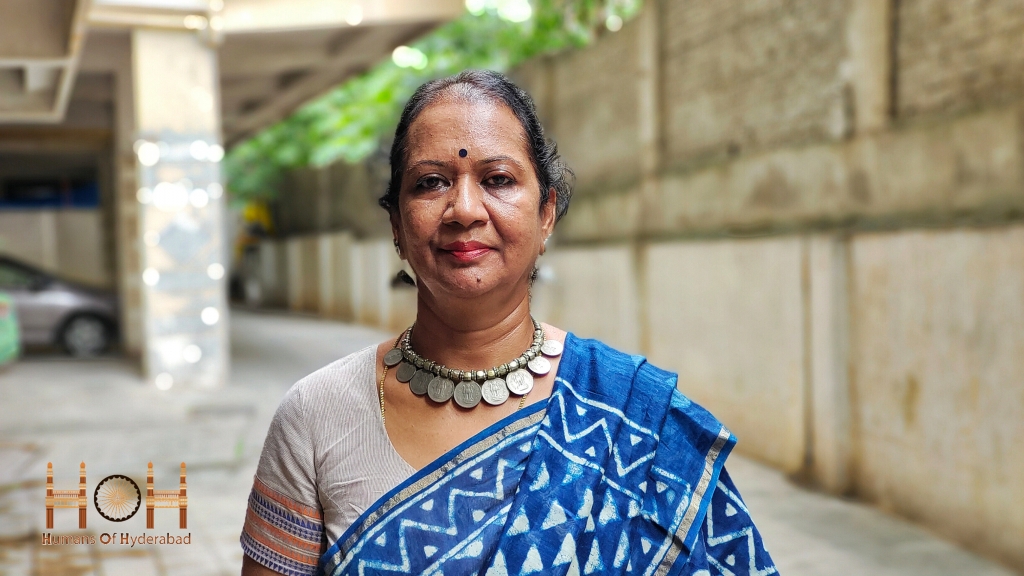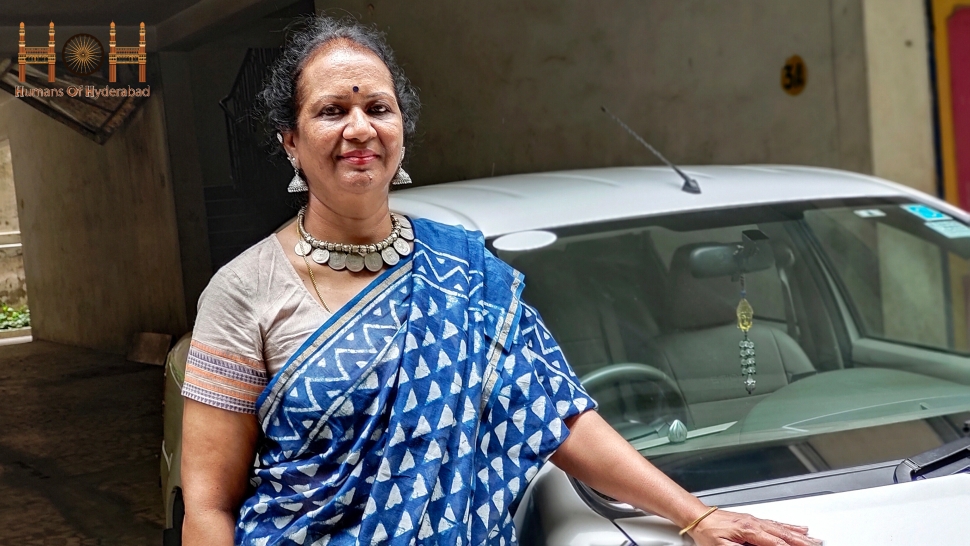“I am a pure Hyderabadi by heart. Although we speak Tamil at home, I was born in Hyderabad because my grandparents have settled in Hyderabad 100 years ago.
Ours was a typical middle-class upbringing. We were six siblings at home and my father was a sales manager at Brooke Bond company. I went to St. Francis School, college and I did my graduation and Post-graduation from Osmania University.
My first job was in LV Prasad Eye Institute. I was the Administrative Assistant of Dr Gullappalli N Rao, who is the Founder and chairman of LV Prasad Eye Institute. So when I joined LV Prasad Eye Institute, I was 24 years old and was already married. I had a son who was only 10 months old. And when I worked there, I had learnt many life-enriching experiences from Dr Rao. So until today, I call him my “Mentor”.
In the initial years, I worked extremely hard, proved my mettle and grew to be an associate administrator of LV Prasad Eye Institute. I was in charge of patient care and I truly loved what I was doing. Back then, the patients used to come from different parts of the country to undergo a corneal transplant. It is only when somebody donates their eyes after death that the corneas can be removed and they can undergo a corneal transplant. But the eye donations were uncommon at that time. So these patients used to wait for at least six months to a year in expectation of a corneal transplant. We were aware of the plight of these patients and it’s pathetic. So we started the Eye Bank in LV Prasad in the year 1989.
A few years later, Dr Rao himself asked me if I would be interested in working with the Eye bank Association of India. I went back home and asked my husband and mother in law about this as it requires me to travel across many states. Thankfully, both of them agreed. In fact, my mother in law has been a constant support for me. “If it’s going to be of any help to society, just go ahead and do it,” she said.

I went ahead for training in Prague, Czech Republic and later, Baltimore in the USA. I came back and joined the Eye Bank Association of India in Hyderabad in 1993. I was the Executive Director until 2001.
During my tenure, we did National Public Education programs with the actor Aishwarya Rai endorsing eye donation. And the response from the public is extremely good. However, we found that more than 60 per cent of the people who responded were young people below the age of 20. Then, we approached Mr Amitabh and Mrs Jaya Bachchan to do a similar TV spot. They immediately agreed. So we shot them and televised them on Doordarshan, Star, and a few other spaces. Again there was a tremendous response from the public. Now, because it was a couple endorsing eye donation, we received huge support and response from families.
Today we can receive 55,000 eye donations on an average per year. So those are the formative years and I am extremely happy that I was part of the initial stages of eye donation in the country.
Later, from the Eye bank association of India, I moved to MOHAN (Multi Organ Harvesting Aid Network) Foundation in 2001. Back then, Dr Ravindranath, the Chairman of Global Hospital, and Dr Kakarla Subbarao, who was the Director of NIMS, were trustees of MOHAN Foundation. The founder of the MOHAN Foundation is Dr Sunil Shroff in Chennai. We went and visited him and he advised us to start MOHAN Foundation in Hyderabad and that is how we took a step further.
I started as a Country Director and all that I have learnt in the eye donation, I had replicated in Organ Donation. For all the people whom I spoke about eye donation, I started making presentations on Organ Donation to them. Again, those were the beginning years of Organ Donation. So everyone welcomed me with open arms. Some people were sceptical about how organs are going to be retrieved? But because of the background that I had, people trusted me for my honesty and we started with the organ donations.

Quite unfortunately, I had a personal tragedy in my own life in 2004. I had a son who was 19 years old. His name was Swamy Narayan. He was pursuing his second year of Engineering at SRM University in Chennai.
In January of 2004, he came to Hyderabad for the Pongal vacation. On January 13, 2004, he went out to celebrate his birthday with his friends. Towards twilight, he called to inform that he would spend that night at a friend’s farmhouse. At 5 am on the morning of January 14, I received a call from Kamineni Hospital saying that Swamy had been admitted after meeting with a road accident. He was on his way back from Nagarjuna Sagar with three other friends when their car was hit by a lorry. Two of them, including Swamy, were seriously injured. Swamy was declared brain-dead by the doctors on the evening of January 15. Then, we as a family decided that we will go ahead and donate Swamy’s organs. So we donated his two eyes, liver and kidneys giving life to five people and I continued to work for MOHAN Foundation.
Later, even my husband joined me in MOHAN Foundation and both of us have counselled more than 400 families together. And when we counsel the families of the brain dead patients, we tell people that once we were in the same spot as them, which makes our appeal more genuine and easier to identify with. One can never bring back their dear ones and the only thing that will be left if one comes forward to donate his/ her organs is that they will have that gratification for the rest of their lives.
At any given point of time in the country, there are at least five lakhs of people waiting for different organs – heart, liver, kidneys, and now after Covid, there are a lot of patients waiting for lungs because their lungs are affected. They need urgently a lung transplant so our lungs can also be donated after death. I always say to people that they have been lucky to donate the organs because not everyone gets this opportunity. So if you do have that opportunity, you should clinch that opportunity and just go ahead and say YES to organ donation. That one YES can change the life of people of so many patients who are waiting desperately for organs. India has now a 0.8 per million population Organ donation rate whereas countries like Spain, and Croatia have an organ donation rate of 38 per million in population. We all have to work towards at least making 2 per million population by the end of 2025. So that way, we will be able to help more people who are in need. So on the occasion of Organ Donation Day, I urge all the citizens to come forward and register themselves for the divine cause. Please visit www.mohanfoundation.org and pledge to donate your organs TODAY.
Don’t take your organs to heaven. Heaven knows they are needed on earth.
